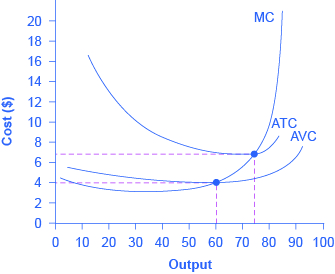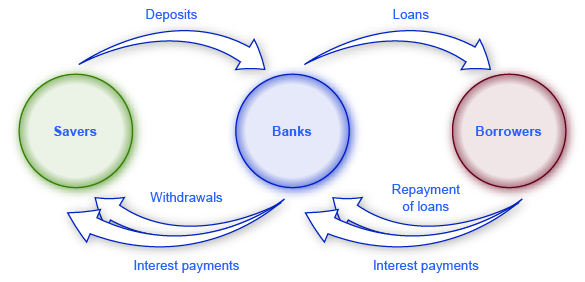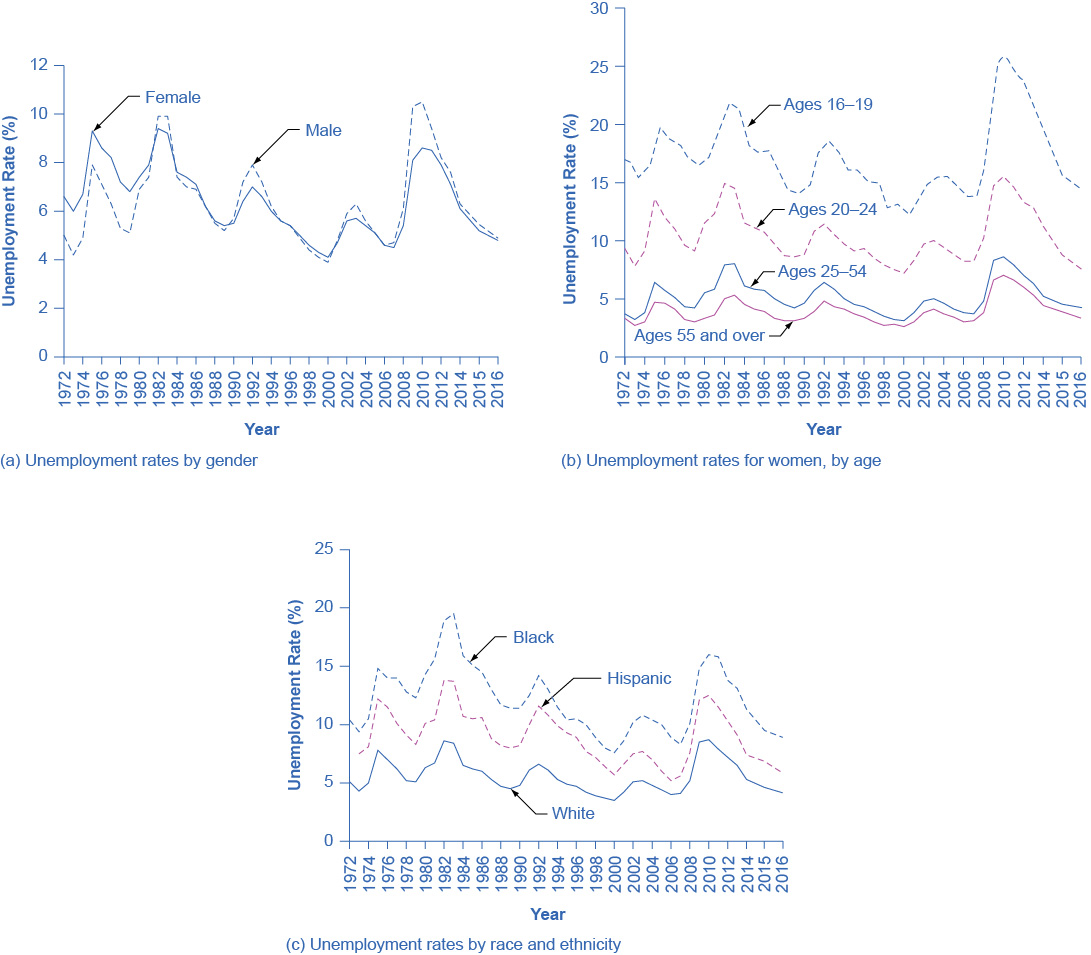Preface
Welcome to Principles of Economics 2e (2nd Edition), an OpenStax resource. This textbook was written to increase student access to high-quality learning materials, maintaining highest standards of academic rigor at little to no cost.
About OpenStax
OpenStax is a nonprofit based at Rice University, and it’s our mission to improve student access to education. Our first openly licensed college textbook was published in 2012, and our library has since scaled to over 25 books for college and AP® courses used by hundreds of thousands of students. OpenStax Tutor, our low-cost personalized learning tool, is being used in college courses throughout the country. Through our partnerships with philanthropic foundations and our alliance with other educational resource organizations, OpenStax is breaking down the most common barriers to learning and empowering students and instructors to succeed.
About OpenStax resources
Customization
Principles of Economics 2e is licensed under a Creative Commons Attribution 4.0 International (CC BY) license, which means that you can distribute, remix, and build upon the content, as long as you provide attribution to OpenStax and its content contributors.
Because our books are openly licensed, you are free to use the entire book or pick and choose the sections that are most relevant to the needs of your course. Feel free to remix the content by assigning your students certain chapters and sections in your syllabus, in the order that you prefer. You can even provide a direct link in your syllabus to the sections in the web view of your book.
Instructors also have the option of creating a customized version of their OpenStax book. The custom version can be made available to students in low-cost print or digital form through their campus bookstore. Visit the Instructor Resources section of your book page on OpenStax.org for more information.
Errata
All OpenStax textbooks undergo a rigorous review process. However, like any professional-grade textbook, errors sometimes occur. Since our books are web based, we can make updates periodically when deemed pedagogically necessary. If you have a correction to suggest, submit it through the link on your book page on OpenStax.org. Subject matter experts review all errata suggestions. OpenStax is committed to remaining transparent about all updates, so you will also find a list of past errata changes on your book page on OpenStax.org.
Format
You can access this textbook for free in web view or PDF through OpenStax.org, and for a low cost in print.
About Principles of Economics 2e
Principles of Economics 2e (2nd edition) covers the scope and sequence of requirements for a two-semester introductory economics course. The authors take a balanced approach to micro-and macroeconomics, to both Keynesian and classical views, and to the theory and application of economics concepts. The text also includes many current examples, which are handled in a politically equitable way. The second edition has been thoroughly revised to increase clarity, update data and current event impacts, and incorporate the feedback from many reviewers and adopters.
Coverage and scope
For the second edition, we received expansive and actionable feedback from hundreds of adopters who had used the book for several academic terms. These knowledgeable instructors informed the pedagogical courses, learning objective development and fulfillment, and the chapter arrangements. Faculty who taught from the material provided critical and detailed commentary.
The result is a book that covers the breadth of economics topics and also provides the necessary depth to ensure the course is manageable for instructors and students alike. We strove to balance theory and application, as well as the amount of calculation and mathematical examples.
The book is organized into eight main parts:
- What is Economics? The first two chapters introduce students to the study of economics with a focus on making choices in a world of scarce resources.
- Supply and Demand, Chapters 3 and 4, introduces and explains the first analytical model in economics: supply, demand, and equilibrium, before showing applications in the markets for labor and finance.
- The Fundamentals of Microeconomic Theory, Chapters 5 through 10, begins the microeconomics portion of the text, presenting the theories of consumer behavior, production and costs, and the different models of market structure, including some simple game theory.
- Microeconomic Policy Issues, Chapters 11 through 18, covers the range of topics in applied micro, framed around the concepts of public goods and positive and negative externalities. Students explore competition and antitrust policies, environmental problems, poverty, income inequality, and other labor market issues. The text also covers information, risk and financial markets, as well as public economy.
- The Macroeconomic Perspective and Goals, Chapters 19 through 23, introduces a number of key concepts in macro: economic growth, unemployment and inflation, and international trade and capital flows.
- A Framework for Macroeconomic Analysis, Chapters 24 through 26, introduces the principal analytic model in macro, namely the aggregate demand/aggregate supply model. The model is then applied to the Keynesian and Neoclassical perspectives. The expenditure-output model is fully explained in a stand-alone appendix.
- Monetary and Fiscal Policy, Chapters 27 through 31, explains the role of money and the banking system, as well as monetary policy and financial regulation. Then the discussion switches to government deficits and fiscal policy.
- International Economics, Chapters 32 through 34, the final part of the text, introduces the international dimensions of economics, including international trade and protectionism.
Alternate Sequencing Principles of Economics 2e was conceived and written to fit a particular topical sequence, but it can be used flexibly to accommodate other course structures. One such potential structure, which will fit reasonably well with the textbook content, is provided below. Please consider, however, that the chapters were not written to be completely independent, and that the proposed alternate sequence should be carefully considered for student preparation and textual consistency.
Chapter 1 Welcome to Economics!
Chapter 2 Choice in a World of Scarcity
Chapter 3 Demand and Supply
Chapter 4 Labor and Financial Markets
Chapter 5 Elasticity
Chapter 6 Consumer Choices
Chapter 33 International Trade
Chapter 7 Cost and Industry Structure
Chapter 12 Environmental Protection and Negative Externalities
Chapter 13 Positive Externalities and Public Goods
Chapter 8 Perfect Competition
Chapter 9 Monopoly
Chapter 10 Monopolistic Competition and Oligopoly
Chapter 11 Monopoly and Antitrust Policy
Chapter 14 Poverty and Economic Inequality
Chapter 15 Issues in Labor Markets: Unions, Discrimination, Immigration
Chapter 16 Information, Risk, and Insurance
Chapter 17 Financial Markets
Chapter 18 Public Economy
Chapter 19 The Macroeconomic Perspective
Chapter 20 Economic Growth
Chapter 21 Unemployment
Chapter 22 Inflation
Chapter 23 The International Trade and Capital Flows
Chapter 24 The Aggregate Demand/Aggregate Supply Model
Chapter 25 The Keynesian Perspective
Chapter 26 The Neoclassical Perspective
Chapter 27 Money and Banking
Chapter 28 Monetary Policy and Bank Regulation
Chapter 29 Exchange Rates and International Capital Flows
Chapter 30 Government Budgets and Fiscal Policy
Chapter 31 The Impacts of Government Borrowing
Chapter 32 Macroeconomic Policy Around the World
Chapter 34 Globalization and Protectionism
Appendix A The Use of Mathematics in Principles of Economics
Appendix B Indifference Curves
Appendix C Present Discounted Value
Appendix D The Expenditure-Output Model
Changes to the second edition
OpenStax only undertakes revisions when significant modifications to a text are necessary. In the case of Principles of Economics 2e, we received a wealth of constructive feedback. Many of the book’s users felt that consequential movement in economic data, coupled with the impacts of national and global events, warranted a full revision. We also took advantage of the opportunity to improve the writing and sequencing of the text, as well as many of the calculation examples. The major changes are summarized below.
- Augmented explanations in chapters one through four provide a more comprehensive and informative foundation for the book.
- A clearer explanation, using a numerical example, has been given for finding the utility maximizing combination of goods and services a consumer should choose.
- The Theory of Production has been added to the chapter on costs & industry structure.
- A more complete treatment has been given to labor markets, including the theories of competitive and monopsonistic labor markets, and bilateral monopoly; and the labor markets chapter and the poverty and
economic inequality chapter have been resequenced. - Substantial revisions to the AD/AS model in chapters 24-26 present the core concepts of macroeconomics in a clearer, more dynamic manner.
- Case studies and examples have been revised and, in some cases, replaced to provide more relevant and useful information for students.
- Economic data, tables, and graphs, as well as discussion and analysis around that data, have been thoroughly updated.
Wherever possible, data from the Federal Reserve Economic Database (FRED) was included and referenced. In most of these uses, links to the direct source of the FRED data are provided, and students are encouraged to explore the information and the overall FRED resources more thoroughly.
Additional updates and revisions appear throughout the book. They reflect changes to economic realities and policies regarding international trade, taxation, insurance, and other topics. For issues that may change in the months or years following the textbook’s publication, the authors often provided a more open-ended explanation, but we will update the text annually to address further changes.
The revision of Principles of Economics 2e was undertaken by Steven Greenlaw (University of Mary Washington) and David Shapiro (Pennsylvania State University), with significant input by lead reviewer Daniel MacDonald (California State University, San Bernardino).
Pedagogical foundation
Throughout the OpenStax version of Principles of Economics 2e, you will find new features that engage the students in economic inquiry by taking selected topics a step further. Our features include:
- Bring It Home: This added feature is a brief case study, specific to each chapter, which connects the chapter’s main topic to the real word. It is broken up into two parts: the first at the beginning of the chapter (in the intro module) and the second at chapter’s end, when students have learned what’s necessary to understand the case and “bring home” the chapter’s core concepts.
- Work It Out: This added feature asks students to work through a generally analytical or computational problem, and guides them step by step to find out how its solution is derived.
- Clear It Up: This boxed feature, which includes pre-existing features from Taylor’s text, addresses common student misconceptions about the content. Clear It Ups are usually deeper explanations of something in the main body of the text. Each CIU starts with a question. The rest of the feature explains the answer.
- Link It Up: This added feature is a very brief introduction to a website that is pertinent to students’ understanding and enjoyment of the topic at hand.
Questions for each level of learning
The OpenStax version of Principles of Economics 2e further expands on Taylor’s original end of chapter materials by offering four types of end of module questions for students:
- Self-Checks are analytical self-assessment questions that appear at the end of each module. They “click to reveal” an answer in the web view so students can check their understanding before moving on to the next module. Self-Check questions are not simple look-up questions. They push the student to think beyond what is said in the text. Self-Check questions are designed for formative (rather than summative) assessment. The questions and answers are explained so that students feel like they are being walked through the problem.
- Review Questions have been retained from Taylor’s version, and are simple recall questions from the chapter in open-response format (not multiple choice or true/false). The answers can be looked up in the text.
- Critical Thinking Questions are new higher-level, conceptual questions that ask students to demonstrate their understanding by applying what they have learned in different contexts. They ask for outside-the-box thinking, for reasoning about the concepts. They push the student to places they wouldn’t have thought of going themselves.
- Problems are exercises that give students additional practice working with the analytic and computational concepts in the module.
Updated art
Principles of Economics 2e includes an updated art program to better inform today’s student, providing the latest data on covered topics.



Additional resources
Student and instructor resources
We’ve compiled additional resources for both students and instructors, including Getting Started Guides, an instructor solution manual, test bank, and PowerPoint slides. Instructor resources require a verified instructor account, which you can apply for when you log in or create your account on OpenStax.org. Take advantage of these resources to supplement your OpenStax book.
Community Hubs

OpenStax partners with the Institute for the Study of Knowledge Management in Education (ISKME) to offer Community Hubs on OER Commons – a platform for instructors to share community-created resources that support OpenStax books, free of charge. Through our Community Hubs, instructors can upload their own materials or download resources to use in their own courses, including additional ancillaries, teaching material, multimedia, and relevant course content. We encourage instructors to join the hubs for the subjects most relevant to your teaching and research as an opportunity both to enrich your courses and to engage with other faculty.
To reach the Community Hubs, visit www.oercommons.org/hubs/OpenStax.
Technology partners
As allies in making high-quality learning materials accessible, our technology partners offer optional low-cost tools that are integrated with OpenStax books. To access the technology options for your text, visit your book page on OpenStax.org.
About the authors
Senior contributing authors
Steven A. Greenlaw, University of Mary Washington
Steven Greenlaw has been teaching principles of economics for more than 30 years. In 1999, he received the Grellet C. Simpson Award for Excellence in Undergraduate Teaching at the University of Mary Washington. He is the author of Doing Economics: A Guide to Doing and Understanding Economic Research, as well as a variety of articles on economics pedagogy and instructional technology, published in the Journal of Economic Education, the International Review of Economic Education, and other outlets. He wrote the module on Quantitative Writing for Starting Point: Teaching and Learning Economics, the web portal on best practices in teaching economics. Steven Greenlaw lives in Alexandria, Virginia with his wife Kathy and their three children.
David Shapiro, Pennsylvania State University
David Shapiro is Professor Emeritus of Economics, Demography, and Women’s, Gender, and Sexuality Studies at the Pennsylvania State University. He received a BA in economics and political science from the University of Michigan, and an MA as well as a PhD in economics from Princeton University. He began his academic career at Ohio State University in 1971, and moved to Penn State in 1980. His early research focused on women and youth in the United States labor market. Following a 1978-79 stint as a Fulbright professor at the University of Kinshasa in the Democratic Republic of the Congo, his research shifted focus to fertility in Kinshasa and more broadly, in sub-Saharan Africa. He has also received the top prize for teaching at both Ohio State and Penn State.
Special thanks to Christian Potter from University of Mary Washington, who thoroughly researched and applied many of the data updates and provided the foundation for many new and revised illustrations.
Development editor
Thomas Sigel
Contributing authors
Eric Dodge, Hanover College
Cynthia Gamez, University of Texas at El Paso
Andres Jauregui, Columbus State University
Diane Keenan, Cerritos College
Dan MacDonald, California State University San Bernardino
Amyaz Moledina, The College of Wooster
Craig Richardson, Winston-Salem State University
David Shapiro, Pennsylvania State University
Ralph Sonenshine, American University
Reviewers
Bryan Aguiar, Northwest Arkansas Community College
Basil Al Hashimi, Mesa Community College
Emil Berendt, Mount St. Mary’s University
Zena Buser, Adams State University
Douglas Campbell, The University of Memphis
Sanjukta Chaudhuri, University of Wisconsin – Eau Claire
Xueyu Cheng, Alabama State University
Robert Cunningham, Alma College
Rosa Lea Danielson, College of DuPage
Steven Deloach, Elon University
Michael Enz, Framingham State University
Debbie Evercloud, University of Colorado Denver
Reza Ghorashi, Richard Stockton College of New Jersey
Robert Gillette, University of Kentucky
Shaomin Huang, Lewis-Clark State College
George Jones, University of Wisconsin-Rock County
Charles Kroncke, College of Mount St. Joseph
Teresa Laughlin, Palomar Community College
Carlos Liard-Muriente, Central Connecticut State University
Heather Luea, Kansas State University
Steven Lugauer, University of Notre Dame
William Mosher, Nashua Community College
Michael Netta, Hudson County Community College
Nick Noble, Miami University
Joe Nowakowski, Muskingum University
Shawn Osell, University of Wisconsin-Superior
Mark Owens, Middle Tennessee State University
Sonia Pereira, Barnard College
Jennifer Platania, Elon University
Robert Rycroft, University of Mary Washington
Adrienne Sachse, Florida State College at Jacksonville
Hans Schumann, Texas A&M University
Gina Shamshak, Goucher College
Chris Warburton, John Jay College of Criminal Justice, CUNY
Mark Witte, Northwestern University

